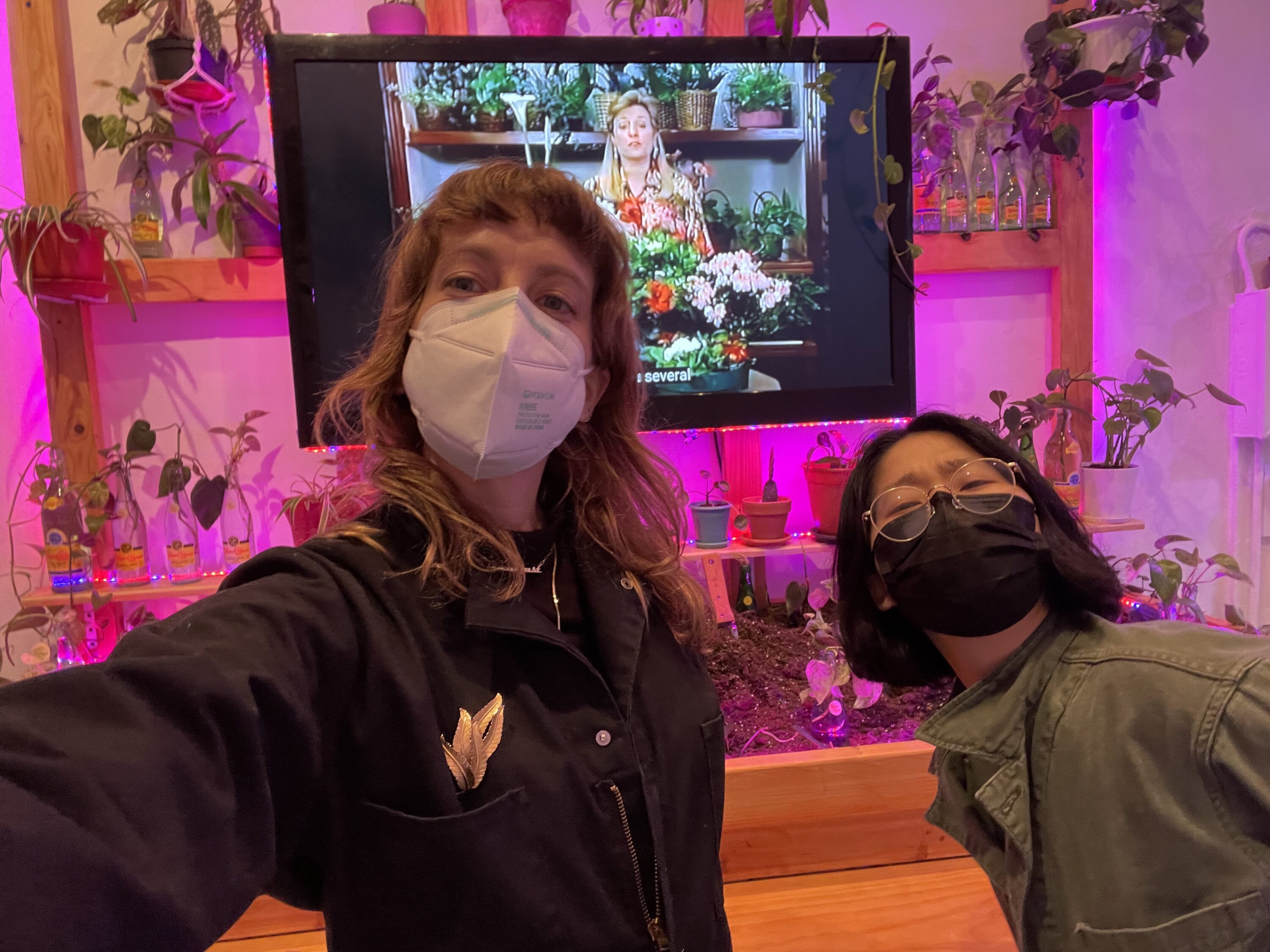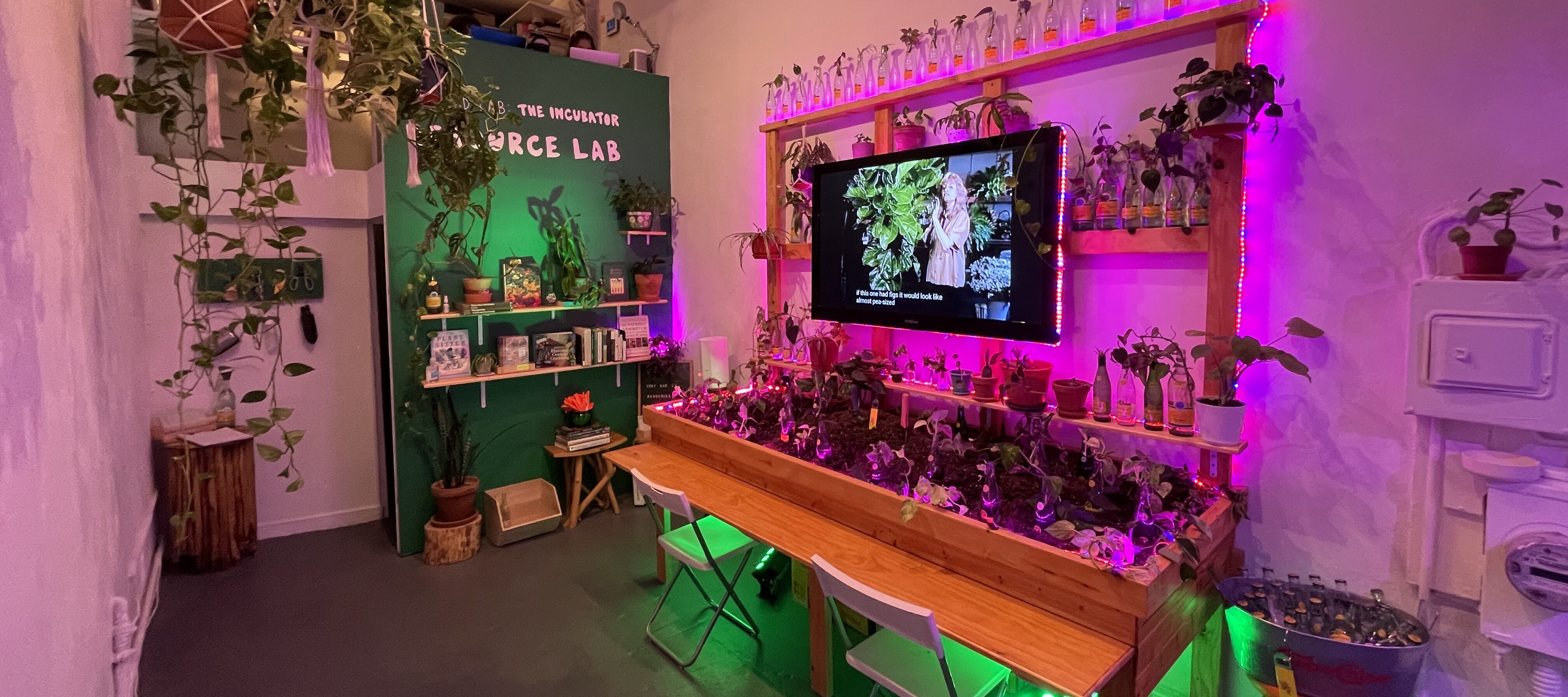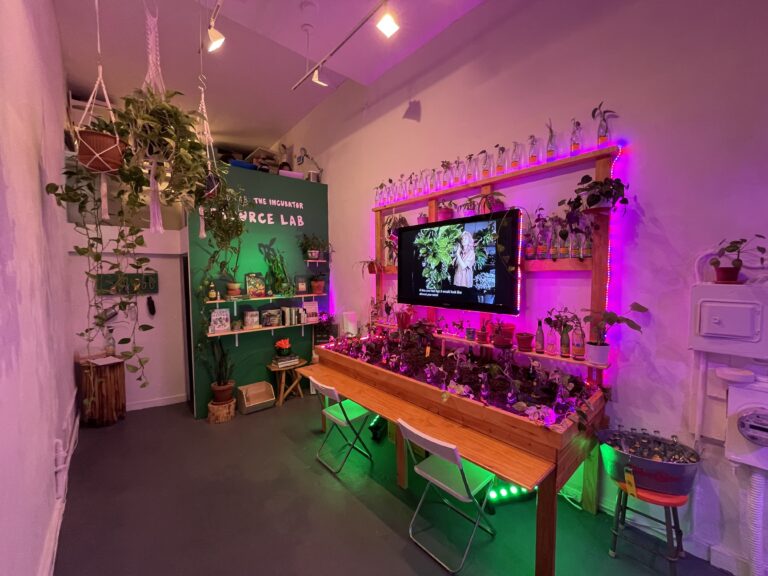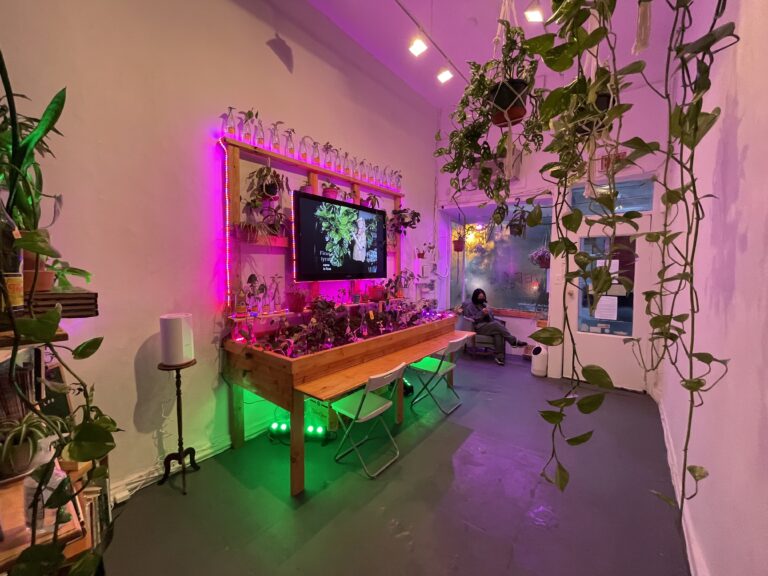Throughout 2022, NMWA’s award-winning #5WomenArtists campaign will champion emerging and underrepresented artists. With the help of partner arts organizations around the country, we’re featuring the work and voices of selected artists each month. This week, get to know Very Sad Lab, nominated by Transformer.
Washington, D.C.-based duo Valerie Wiseman and Naoko Wowsugi, also known as Very Sad Lab, have offered sad plant evaluation, intake, rehabilitation, and plant care education since 2019.

1. Tell us about your work and practice.
Very Sad Lab is a houseplant rehabilitation and research-based community art project. By rehabilitating sad plants, sharing resources, and providing plant education, we aim to build sustainable and greener D.C. communities. We operate nomadically through collaborative pop-ups and via a satellite lab at Eaton House DC.
From an intersection of art, science, ecology, and horticulture, Very Sad Lab seeks to create a greener D.C. by connecting people to nature through plants. Through ongoing plant rehabilitation and research, we are building long-term relationships between plants and people that are rooted in the intentional practices of attention to and care of plants.
2. Who or what are your sources of inspiration and influence?
We are both amateur horticulturists. Our sources of inspiration come from building on our own failures with plants and our struggles to cultivate better green thumbs.
There are so many great resources in the D.C. area. Our favorite local green-thumb programs are:
- DC Urban Gardener’s Network
- Slow Food DC and Share A Seed
- Plantita Power
- Cultivate the City
- City Blossoms
- DC Department of Parks and Recreation Urban Garden Education Program
- grounded
3. As an artist, what is your most essential tool (besides your hands!)? Why?
Humor. A good sense of humor has the power to heal, and we believe plants love laughing with us. Very Sad Lab turns the common human failure of making plants sad into positive, creative, and therapeutic experiences.
4. Where do you obtain your materials?
We obtain and share materials with D.C. communities. Our current exhibition Very Sad Lab: The Incubator at Transformer is a living, growing exhibition and resource lab. Over the last few months, we have collected clippings of plants from plant parents (participants) to propagate in our installation, an indoor nursery. At the close of the exhibition on March 19, 2022, Incubator plants will be adopted by new plant parents throughout D.C., creating a network of green connections across the city.
We also received generous sponsorship from Logan Hardware, A Few Cool Employee-Owned Hardware Stores, and Topo Chico USA for materials used in the exhibition.
5. Who are your favorite #5WomenArtists?
Several big supporters of Very Sad Lab: Dawne Langford, a documentary filmmaker and producer; Elizabeth Grace Tuten, an artist and journalist; and Georgie Payne, a curator and editor of Dirt. We also love Liz Keehan, host of The Indoor Garden, an instructional TV show produced in the Washington, D.C., metro area in the 1990s, and Alexandria Ocasio-Cortez, an American politician, activist, and mastermind in gathering people via social media. She has done a plant repotting session on Instagram live.
Transformer is a Washington, D.C.-based, artist-centered, non-profit visual arts organization. Founded in June 2002 by artists & arts organizers, Transformer connects, elevates, and serves diverse emerging artists and arts leaders. Transformer develops innovative exhibition and program platforms, both independently and through global partnerships, to present artists’ evolving ideas and work, advance new and best visual arts practices, and engage audiences with emerging contemporary art.


